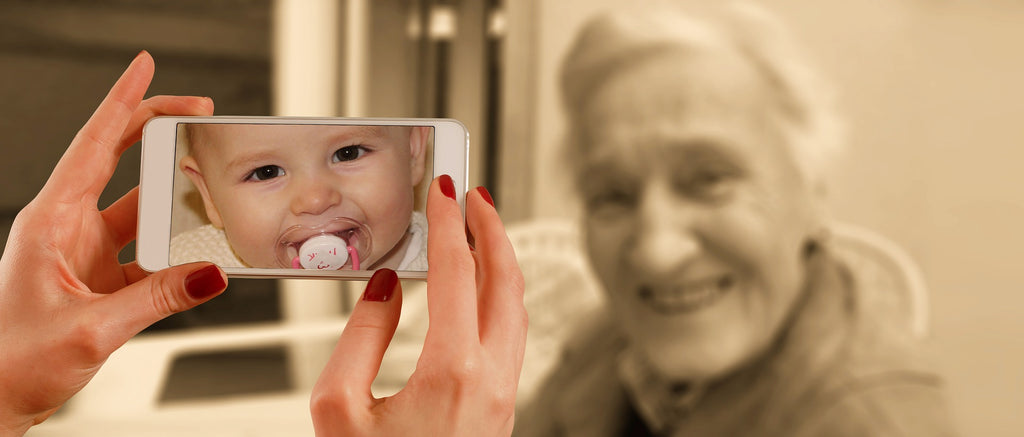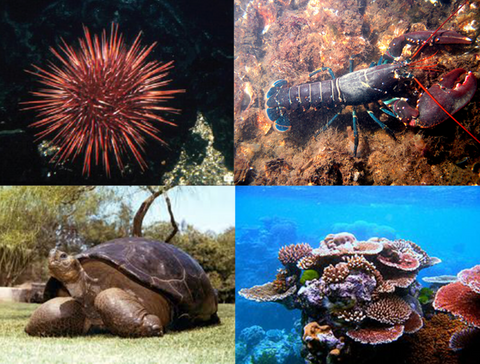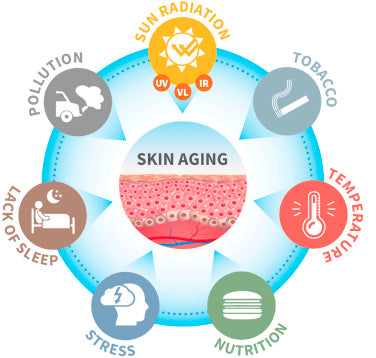
"Aging is an issue of mind over matter. If you don't mind, it doesn't matter"- Mark Twain.
While the above quote may be true, given the choice, most of us would choose to wind back the hands of time and reverse the wrinkles.
The scientific term for aging is "senescence" which refers to the biological process whereby cells in our body undergo changes, which affects their ability to replicate. As our cells divide, the bits at the end of our chromosomes, called telomeres, gradually shorten.
In addition, cells accumulate damage based on environmental stress in the form of free radicals. The cumulative effects of this cycle result in what we call "aging". But did you know that there are two different types of age?

Interestingly some organisms (including perennial plants, sponges, corals, sea urchins, lobsters, and tortoises) do not undergo senescence, which suggests the process might be able to be co-opted in humans.
Biological age vs. chronological age
Chronological age refers to the number of years a person has been alive, whereas biological age refers to how old a person physically appears. This means that people can be the same chronological age but different biological ages.
The loss of the elastic tissue (collagen and elastin) in the skin with age causes the skin to sag. Skin also becomes more transparent and fragile as we age, due to the thinning of the epidermis (surface layer of the skin).
Factors that affect biological aging
While we cannot turn back the hands of time, there are a number of factors that have a clear correlation to how old we appear or our biological age. These include 'extrinsic' (i.e. environmental) and 'intrinsic' (i.e. genetic) factors.
Extrinsic Factors
In a twin study of 65 pairs of twins it was found that 40% of factors that affected skin aging were non-genetic 'extrinsic factors'. The term the "skin exposome" has been coined to describe the total number of external factors that affect how we age. These include: UV radiation, tobacco use, temperature, nutrition, stress, lack of sleep, and environmental pollution.

Above: The "Skin Aging Exposome"
UV Exposure
Sun avoidance during peak UV times (10am-4pm), physical protection, and broad-spectrum sunscreen use are a vital part of preventing premature aging. This is especially important in New Zealand and Australia which have the highest risk of skin cancer in the world, partly due to geography, the popularity of outdoor activities, and European ancestries.

Sunlight is composed primarily of UVA (315–400 nm), and UVB energy (290–320 nm), which penetrate the dermis and epidermis of the skin, while most UVC (100–280 nm) is absorbed by the ozone layer.
Inflammaging and Epigenetics
Lifestyle, Diet and "Inflammaging" Alcohol consumption, smoking, pollution, stress, and a wide range of dietary factors may accelerate biological aging and the onset of age-associated diseases.
The term "Inflammaging" has been used to describe the direct impact that inflammation has on biological aging, and encompasses these effects.
As we age certain types of modifications to our DNA occur, known as "epigenetic changes", that regulate gene expression without altering the DNA sequence itself.
Interestingly, recent evidence suggests that nutrients play a crucial role in the regulation of epigenetic modifiers. The ability to regulate epigenetic changes to help improve longevity is a goal of this hot area of research.

Intrinsic Factors
Genetic Factors in Aging
We are a product of our genes and the environment. It makes sense that genetic differences between individuals which provide an advantage in telomere function, or prolonging skin health, e.g. collagen and elastin production, might play a role in the apparent differences in biological aging of individuals.
Genetic factors interact in a complex way with extrinsic factors to impact our overall biological age. For example, people of European descent with fair skin are more susceptible to skin damage through UV exposure.
Similarly, those who are predisposed to lifestyle diseases such as diabetes are more likely to experience oxidative stress that may lead to "inflammaging."
Researchers are actively working on deciphering the genetic basis of the aging process. The Human Ageing Genomic Resources (HAGR) is a collection of databases and tools designed to help researchers in this space. It lists 307 genes found in humans that are involved in aging, and 73 that have been identified to be commonly altered. It also maps out genetic variants that have been found to lead to longevity.
Final Thoughts
Progress in the field of aging is fascinating and is no doubt fueling a rush by many companies to develop the next elixir of youth. In the future as medical science advances, we will no doubt live longer lives and adjust our standards on what old age means. In 1870 the average life expectancy in NZ was 34 years old (29 globally), and now it has risen to 81 (72 globally)!
While we might not invent a time machine, it may be possible to reverse the effects of aging. While we all wait for a cure, the best thing to do is make sure you try and limit the exposure of potentially harmful external factors on your skin. Having a daily skincare routine will no doubt help with that as well.

